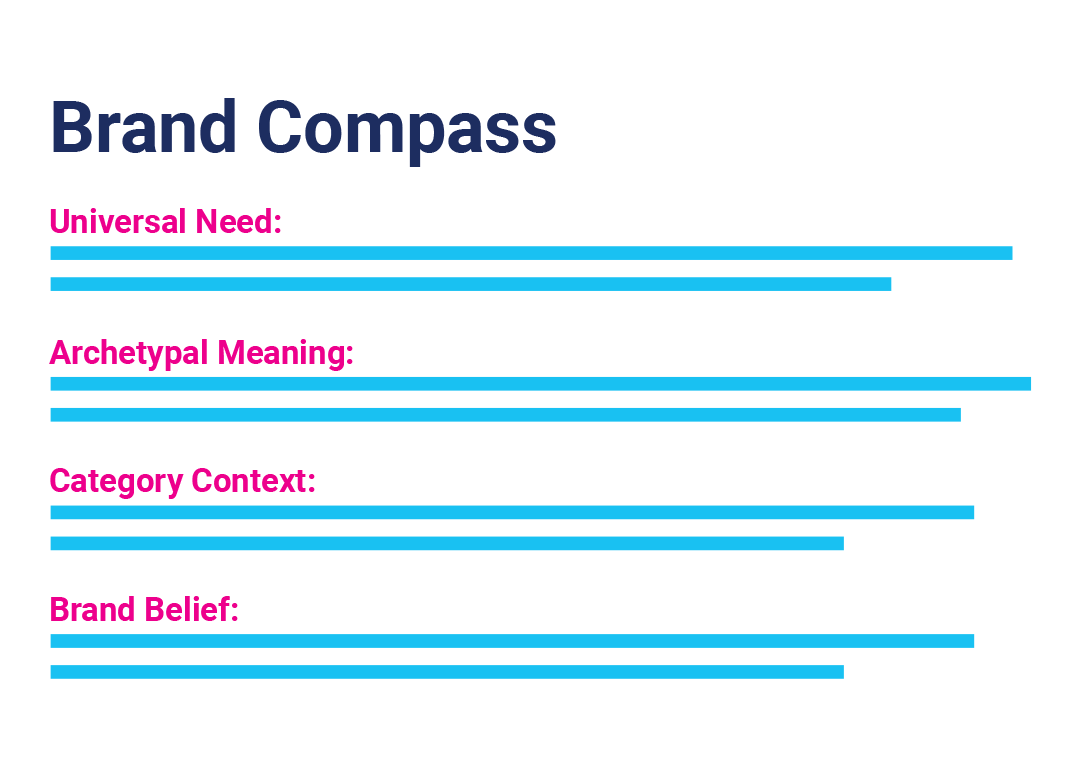Defining the core elements of a brand compass
A brand compass has greater longevity than other internal marketing documents because it provides direction on an ideal or aspirational goal for the brand. The compass consists of several different elements that, together, provide a clear definition of a brand. Typically, these elements live on a single page or slide, making the brand compass incredibly easy to reference or share in a marketing meeting or presentation to a potential partner.
A brand compass might include the following elements:
- Brand purpose or a founding statement about why the brand exists
- Connection to a need or desire of the core audience
- Key category insight into the brand’s ability to solve a challenge
- Brand behaviors and traits that define how the brand should act
- Key brand elements such as visual, iconic or cultural connections and ties
- Supporting evidence ensuring the believability of previous elements

Three areas the brand compass impacts beyond marketing
Ensuring the brand compass is utilized to its full capacity requires true buy-in from the core brand team and company leadership. A brand compass is designed to simplify a marketing strategy and brand storytelling around a few essential elements, so this document’s applications go far beyond informing marketing, including:
1. Partnerships, mergers and acquisitions
As a brand grows and begins to acquire other companies, a brand compass can determine how well the company being acquired aligns with the acquiring brand. This is even more important when looking for ideal collaborative partners where internal strategic documents might be shared.
The brand compass contains key brand elements such as taglines, brand colors, cultural connections and supporting evidence that could be used to determine how well the brands complement each other.
2. Product portfolio strategy
While the brand compass does not provide the full brand tree or brand hierarchy of products or sub-brands, it does contain key brand behaviors and traits that define the ideal ways for the brand to act and an archetypal role to play.
This information can help determine whether a new product fits within a strategy that is consistent with the brand (e.g., providing many innovative solutions to a similar problem or a streamlined solution to each audience challenge that the brand looks to solve or improve upon).
3. AI training for opportunity assessment
With companies increasingly training AI assistants and data analysis software on their company’s current and historic sales data and category trends, the brand compass serves as a powerful internal strategy document that helps determine which opportunities provide a consistent link to the brand and which are more of a distraction.
Given that the brand compass contains an overview of the core audience’s need or desire and a purpose statement, this document provides a strong, established perspective for AI to review data through the lens of a brand steward.
Building your brand compass
The best time to create or revise a brand compass is during a major shift in the brand, such as a change in leadership or a new product launch or sales push. This may happen every three to five years or even sooner. The brand compass will need to be continually updated as the brand grows, meets company goals or new leadership adjusts the company vision or purpose.
Trone is ready to help develop a brand compass that speaks to the future of your brand and makes decision-making easier. Reach out to discuss your brand compass and any other internal marketing documents you may need.



